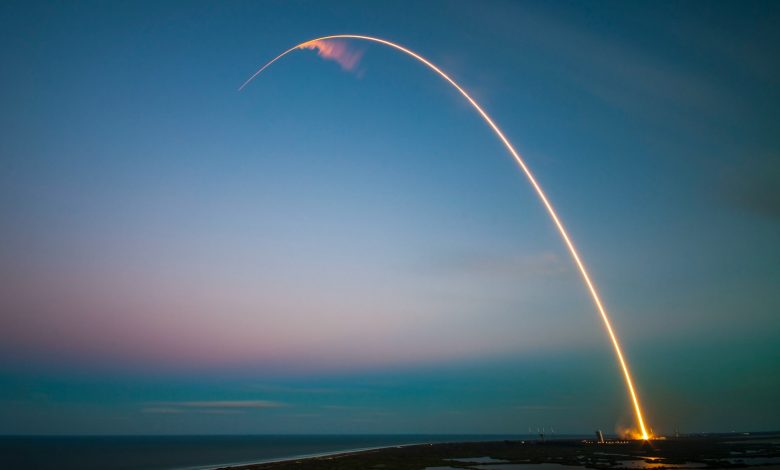
Table of Contents
Launch of HII-A Rocket
Japan Aerospace Exploration Agency (JAXA) successfully launched the HII-A rocket, marking a significant milestone in the advancement of space exploration. The take-off was conducted at the Tanegashima Space Center and was broadcasted live, allowing people around the globe to partake in this historic occasion.
Successful Launch by Japan Aerospace Exploration Agency (JAXA)
The launching of the HII-A rocket added yet another feather in the cap of Japan Aerospace Exploration Agency (JAXA). Through this operation, JAXA has once again reaffirmed its commitment to unravel the mysteries of the universe and bring forward new paradigms of understanding.
Live Broadcast from Tanegashima Space Center
As part of its dedication to sharing milestones in space exploration, the launch was broadcasted live from Tanegashima Space Center. This allowed space enthusiasts, researchers, and other interested parties to join in the spectacle and share in the excitement of the momentous occasion.
X-Ray Imaging and Spectroscopy Mission (XRISM)
The X-Ray Imaging and Spectroscopy Mission (XRISM) is a significant component of the HII-A rocket launch. It is a revolutionary project aimed at presenting a comprehensive analysis of the universe's origins by studying the composition and speed of intergalactic matter. The mission is not only a milestone for JAXA but also a testament to international cooperation as it involves collaboration with NASA.
Placement into Earth Orbit
About 13 minutes after the successful launch of the HII-A rocket, the XRISM was placed into Earth's orbit. This marked the beginning of its mission to capture crucial data about the universe.
Study of Intergalactic Matter
The XRISM is equipped with advanced tools designed to meticulously study the composition and speed of intergalactic matter. Through this analysis, the mission aims to decipher the intricacies of the universe. This ambitious goal is fueled by the desire to understand the processes that led to the formation of celestial bodies.
Formation of Celestial Bodies and Universe Origins
By studying intergalactic matter, XRISM's ultimate goal is to trace back the origins of the universe and explore the formation of celestial bodies. This mission is a step towards resolving the mysteries surrounding the existence of the universe.
Cooperation with NASA
The XRISM is a cooperative project between JAXA and NASA, demonstrating international collaboration in the realm of space exploration. The collective expertise and resources of both space agencies enhance the probability of comprehensive spatial analysis and increase the chances of a successful mission.
Deployment of Smart Lander for Investigating Moon (SLIM)
The Smart Lander for Investigating Moon (SLIM) is another key aspect of the HII-A rocket launch. As a part of JAXA's mission, SLIM has been dispatched with the aim of effecting a precise lunar landing using newly-developed 'pinpoint landing technology'. The lander successfully disengaged from the rocket after 45 minutes of flight and is scheduled to land on the moon within 3 to 4 months.
Scheduled for Lunar Landing
Scheduled to land on the moon within a projected timeline of 3-4 months post-launch, SLIM holds immense promise in the realm of lunar exploration. This timeline serves to provide sufficient transit time for the lander to navigate from Earth to the Moon.
'Pinpoint Landing Technology' Development
For the purpose of precise landings on the moon and potentially other celestial bodies in the future, JAXA has developed an advanced 'pinpoint landing technology'. This technology increases landing accuracy, which is crucial for safe and effective exploration missions.
Successful Disengagement from the Rocket
The SLIM lander successfully disengaged from the HII-A rocket 45 minutes after the launch. This crucial juncture marked the beginning of its separate journey into lunar space, setting the stage for the next important phase of the mission – the lunar landing.
Recent Developments in Japan’s Space Program
Japan has been making considerable strides in space exploration, with the launch of the HII-A rocket representing one of the most recent successes of the Japan Aerospace Exploration Agency (JAXA). However, the path to this achievement has not been without complications. There have been mixed results in prior rocket launches, with some unsuccessful attempts. Despite these setbacks, JAXA continues to innovate and reach for the stars, recently reopening recruitment for astronauts and unveiling plans to send a Japanese astronaut to the moon.
Mixed Results with Failures in Rocket Launches
Japan's space exploration journey has been marked by a combination of achievements and challenges. Some past rocket launches have not gone as planned, resulting in unsuccessful missions. These occasions have served as learning opportunities, pushing JAXA to review, improve, and implement new strategies to achieve their goals.
Renewed Recruitment for Astronauts
As part of furthering its ambitions in space exploration, JAXA has recently reignited its recruitment process for astronauts. This marks an integral step in expanding its human resources, broadening the pool of talent, and paving the way for future missions.
Plan to Send a Japanese Astronaut to the Moon
In a historic announcement, JAXA also revealed plans to send a Japanese astronaut to the moon. This ambitious plan marks a momentous milestone in Japan's history of space exploration, reinforcing its commitment to making significant contributions to the global understanding of the universe.




